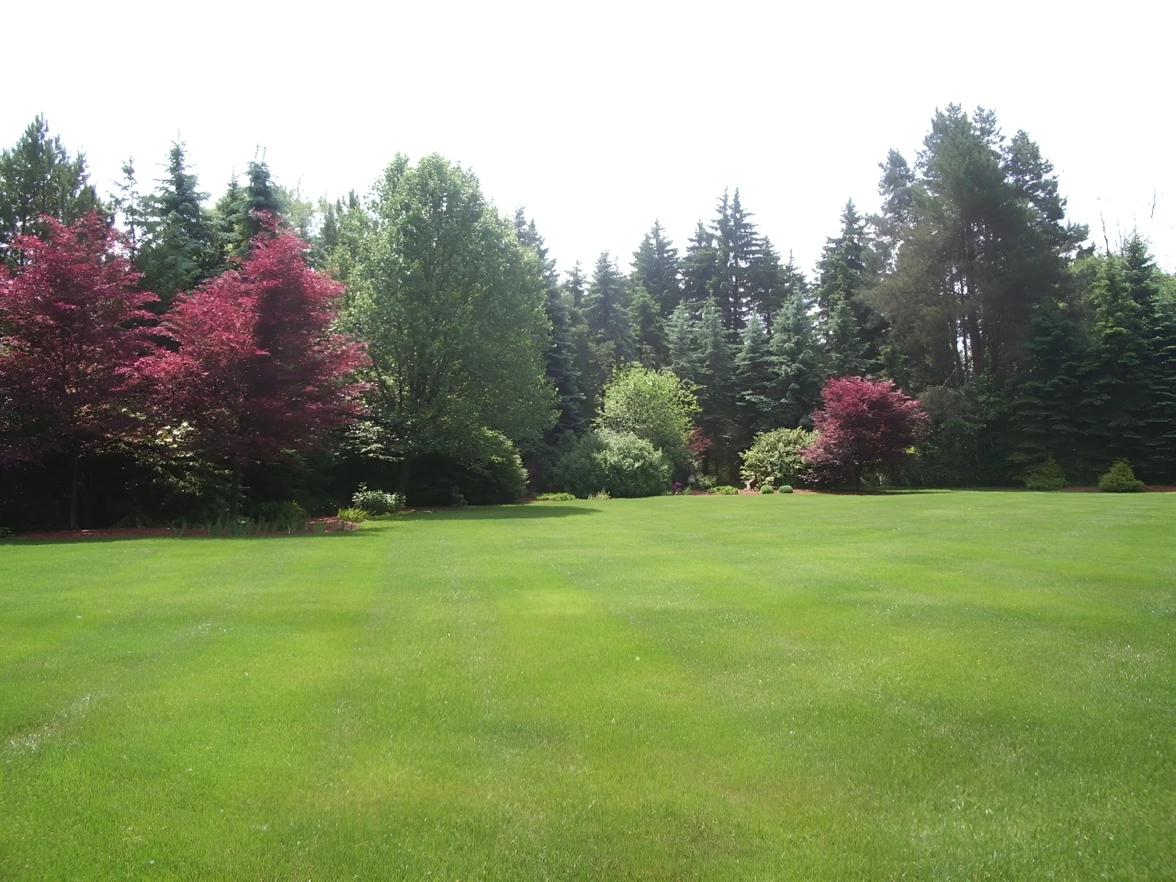If you live in Connecticut, you already know your lawn takes a beating. Between spring rains, humid summers, and naturally acidic soil, keeping a lush patch of green isn’t as simple as watering once in a while and mowing every Sunday. Lawns here can be stubborn, yellowing in spots, thinning out in others, or sprouting weeds faster than you can pull them. Sound familiar? The good news: most of these problems have straightforward fixes once you know what you’re looking at. And no, it doesn’t always mean dumping more fertilizer on the lawn. Sometimes it’s about soil health. Sometimes it’s an insect lurking underground. Sometimes it’s just mowing too short. Local pros like https://yardgoats.io/ know these challenges inside and out and can step in when DIY solutions aren’t enough. Let’s walk through the most common problems Connecticut homeowners face, why they happen, and what you can do (with or without a professional) to bring your lawn back to life.
Yellow Grass: More Than Just a Bad Hair Day
Few things worry homeowners more than watching their once-green lawn fade to yellow. The reasons aren’t always obvious, but here are the usual suspects:
- Nutrient deficiencies
Connecticut’s soil tends to be acidic, which can block your grass from absorbing nitrogen and iron properly. - Watering issues
Too much water suffocates roots, too little dries them out. Both lead to yellow blades. - Compacted soil
Roots can’t get oxygen, so the grass starves. - Mowing too low
Scalping the grass stresses it out and exposes soil. - Pet “hot spots”
Yes, those little yellow circles on the lawn are often courtesy of Fido.
DIY fix: Start with a soil test (UConn Extension offers a reliable one). If the pH is below 6.0, apply lime to sweeten the soil. Fertilize lightly in spring and fall, keeping nitrogen in balance. Water deeply once or twice a week rather than shallow daily sprinkles. And sharpen those mower blades, dull blades tear grass and leave yellow edges. For pet spots, flush the area with water right after the dog goes, and overseed if the grass has died completely.
When to call in help: If the yellowing keeps spreading despite your fixes, you may have a fungal disease or insect problem. A professional lawn service can test for pathogens or pests and apply targeted treatments that aren’t always available at garden centers.
Bare Patches: Those Awkward Bald Spots
Every lawn gets them: random patches of dirt where grass just refuses to grow. They’re unsightly, and worse, they’re an open invitation for weeds.
Why they happen:
- Heavy foot traffic (think dog paths or kids playing tag).
- Grubs or other pests chewing roots underground.
- Too much shade or poor soil in that particular spot.
- Fertilizer burn or even spilled de-icing salt along driveways.
DIY fix: Rake the patch to loosen soil, mix in compost, and overseed with a grass blend that matches your lawn (sun mix for open areas, shade mix under trees). Water daily until seeds sprout. For high-traffic zones, consider adding stepping stones or mulch paths to redirect the wear.
Professional solution: If your lawn is more bald than green, overseeding the whole thing with a slit seeder may be smarter than patchwork repairs. Lawn care companies have equipment to handle large areas efficiently and can recommend the right seed blends for Connecticut’s climate.
Weeds: The Battle You’re Tired of Losing
Dandelions, crabgrass, clover, chickweed, they’re more than just an eyesore. They compete with your turf for nutrients and water. And let’s be honest: once they go to seed, they spread like gossip.
Why they show up:
- Thin, weak turf gives weeds room to move in.
- Compacted or nutrient-poor soil favors certain weeds (plantain loves hard soil, clover thrives in low nitrogen).
- Skipping regular mowing or fertilizing gives weeds a head start.
DIY fix:
- Pull small weeds by hand, roots and all, after rain when the soil is soft.
- Spot-spray persistent broadleaf weeds with a selective lawn herbicide.
- Apply a pre-emergent in early spring (right when the forsythias bloom) to block crabgrass seeds.
- Keep your grass taller, mowing at 3 inches shades the soil and makes it harder for weeds to germinate.
When to get help: If weeds have taken over more than half your lawn, a pro can blanket-treat the yard with commercial-grade herbicides and then reseed to thicken the turf. They’ll also diagnose why the weeds took over in the first place, maybe your soil pH is way off or your grass variety just isn’t suited to your yard.
Grubs, Chinch Bugs, and Other Tiny Wrecking Crews
Sometimes the problem isn’t what you see above ground, but what’s happening beneath it. White grubs (the larvae of beetles) chew grass roots until whole patches of turf lift up like carpet. Chinch bugs suck the juice out of grass blades, leaving expanding straw-colored patches. Even sod webworms and armyworms can chew through lawns quickly in late summer.
DIY fix: Dig a few inches into the edge of a brown patch. If you spot more than five grubs per square foot, it’s time to act. Beneficial nematodes (tiny worms sold in garden centers) can help reduce grub populations. For chinch bugs, a soapy water flush test will reveal them, if they float to the surface, you’ve got a problem. Keep your lawn dethatched and watered to reduce their stronghold.
Professional solution: Many effective grub and insect treatments are only available to licensed applicators in Connecticut. If your lawn damage is severe or keeps coming back, let a pro handle the timing and application. They can also overseed damaged areas to speed up recovery.

Fungus Among Us: Lawn Diseases
Ever notice strange brown rings, bleached dollar-sized spots, or a pinkish tinge across your lawn? That’s fungus talking. Connecticut lawns are prone to brown patch, red thread, and dollar spot, especially in humid weather.
DIY fix: Water early in the morning so grass blades dry quickly. Avoid overfertilizing in summer, lush growth is like a buffet for fungi. Sharpen mower blades and bag clippings if disease is active. A balanced feeding in spring and fall helps strengthen grass against infection.
When to call a pro: Fungicides exist for homeowners, but they can be pricey and finicky. If more than a third of your lawn is affected or the problem keeps returning each year, a lawn care company can identify the exact disease and apply stronger fungicides at the right intervals.
Soil Problems: The Hidden Culprit
Sometimes the grass isn’t the problem – the soil is.
- Compaction makes soil feel like concrete, choking out roots. Core aeration (pulling plugs of soil) each fall or spring helps restore airflow and water penetration.
- Poor drainage creates swampy patches where grass drowns. You may need to regrade, add sand and compost, or even install a French drain for chronic issues.
- Acidic soil (low pH) is extremely common in Connecticut. If moss is thriving where grass should be, that’s your clue. A soil test will confirm it. Adding lime every few years usually brings pH back into the grass-friendly 6.0–7.0 range.
DIY fix: Rent an aerator, topdress with compost, and keep up with lime applications if your soil test calls for it.
Professional solution: For stubborn soil problems, like yards with construction fill, severe compaction, or chronic drainage failure, landscapers can rework the grade, amend soil, or even install subsurface drains. It’s an investment, but it can completely change how your lawn grows.
Choosing the Right Grass
One overlooked “problem” is simply planting the wrong type of grass for your yard. Connecticut lawns thrive on cool-season grasses like Kentucky bluegrass, perennial rye, and fine or tall fescues. Each has its strengths:
- Bluegrass: classic look, but thirsty in drought.
- Ryegrass: quick to germinate, decent traffic tolerance.
- Fine fescues: thrive in shade and poor soils.
- Tall fescue: deep roots, great for drought-prone spots.
A mix is usually best, so no matter what your yard throws at you, at least one grass type is happy.
Bringing It All Together
Here’s the truth: lawn problems in Connecticut rarely exist in isolation. Weeds move in when grass thins. Fungus shows up when watering schedules are off. Pests take advantage of weak roots in poor soil. It’s all connected.
The fix isn’t chasing symptoms but building a healthier lawn from the ground up, balanced soil pH, the right grass species, proper mowing and watering habits, and timely overseeding. Do that, and many of the problems fade on their own.
And when the lawn still throws you a curveball (because it will), you’ll know whether it’s a quick DIY job or something worth handing off to a pro. At the end of the day, your lawn should feel like an asset, not a constant battle. With a little knowledge, and the right timing, that green, lush carpet is well within reach.







Leave a Reply